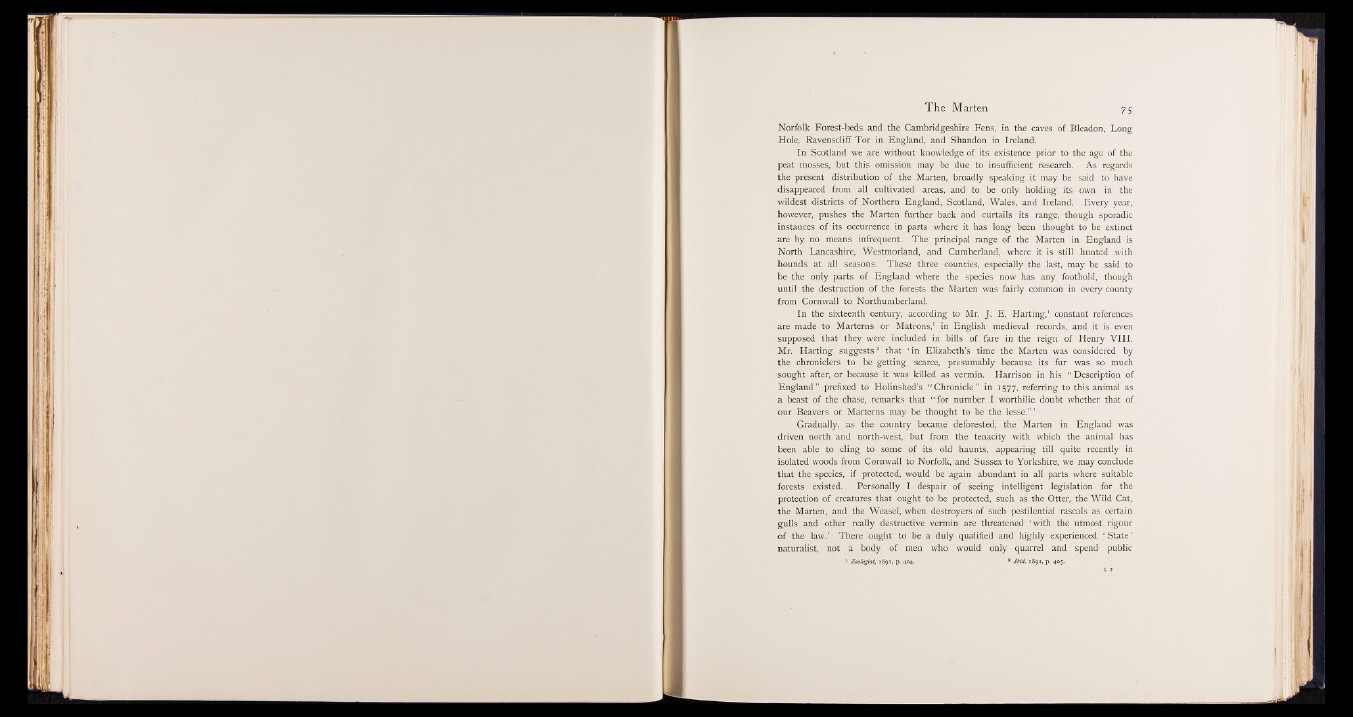
Norfolk Forest-beds and the Cambridgeshire Fens, in the caves of Bleadon, Long
Hole, Ravenscliff Tor in England, and Shandon in Ireland.
In Scotland we are without knowledge of its existence prior to the age of the
peat mosses, but this omission may be due to insufficient research. As regards
the present distribution of the Marten, broadly speaking it may be said to have
disappeared from all cultivated areas, and to be only holding its own in the
wildest districts of Northern England, Scotland, Wales, and Ireland. Every year,
however, pushes the Marten further back and curtails its range, though sporadic
instances of its occurrence in parts where it has long been thought to be extinct
are by no means infrequent. The principal range of the Marten in England is
North Lancashire, Westmorland, and Cumberland, where it is still hunted with
hounds at all seasons. These three counties, especially the last, may be said to
be the only parts of England where the species now has any foothold, though
until the destruction of the forests the Marten was fairly common in every county
from Cornwall to Northumberland.
In the sixteenth century, according to Mr. J . E. Harting,1 constant references
are made to Marterns or Matrons,1 in English medieval records, and it is even
supposed that they were included in bills of fare in the reign of Henry V III.
Mr. Harting suggests2 that ‘ in Elizabeth’s time the Marten was considered by
the chroniclers to be getting scarce, presumably because its fur was so much
sought after, or because it was killed as vermin. Harrison in his “ Description of
England” prefixed to Holinshed’s “ Chronicle” in 1577, referring to this animal as
a beast of the chase, remarks that “ for number I worthilie doubt whether that of
our Beavers or Marterns may be thought to be the lesse.” ’
Gradually, as the country became deforested, the Marten in England was
driven north and north-west, but from the tenacity with which the animal has
been able to cling to some of its old haunts, appearing till quite recently in
isolated woods from Cornwall to Norfolk, and Sussex to Yorkshire, we may conclude
that the species, if protected, would be again abundant in all parts where suitable
forests existed. Personally I despair of seeing intelligent legislation for the
protection of creatures that ought to be protected, such as the Otter, the Wild Cat,
the Marten, and the Weasel, when destroyers of such pestilential rascals as certain
gulls and other really destructive vermin are threatened ‘ with the utmost rigour
of the law.’ There ought to be a duly qualified and highly experienced ‘ State ’
naturalist, not a body of men who would only quarrel and spend public
1 Zoologist, 1891, p. 404. 4 Ibid. 1891, p. 405.